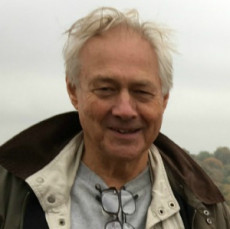Tuzla, July 26: Tuzla is built on salt, and so much salt has been extracted that part of the city is subsiding. The old town hall has already been abandoned. In 1995, towards the end of the war the Serbs lobbed a shell into the city center which killed over 70 Muslims (now called Bosniaks) – the worst single incident of the war.
But the city center has long since been transformed, and on a summer’s night everyone under the age of 30 seems to turn out to drink coffee and watch each other. How they can afford it with unemployment at 40% beats me. But it is charming.
The Bosfam house lies near the city center within a stone’s throw of the International Center for Missing Persons (ICMP) the organization that has been using DNA to identify Srebrenica massacre victims. Just over 3,000 have been identified so far and reburied. Thousands of body bags containing body parts remain stored in former salt mines, dug into the side of hills. With each passing year, it becomes harder to make a match, but they did manage to identify another 307 bodies this summer. All were buried on July 11 at Poticari, scene of the massacre. One Bosfam weaver buried two of her brothers.
From past visits I remember Bosfam house as a place of great tranquility, particularly in the late afternoon when the sun streams in and the women ply their looms, deep in thought. Bosfam can call on about 15 veteran weavers, all of them highly skilled. Nura Suljic who lost a husband in 1993 and three close relatives in July 1995, is a ferocious worker usually the last to leave. The work is deeply therapeutic.
The house is huge and has been given outright to Bosfam by donors. This means they do not have to pay rent, which is a huge advantage. The downside is that heating bills can top $1,000 a month in the winter. Having their own comfortable center has also reduced the incentive to return to Srebrenica. A small number of former Bosfam members have returned so far.
About seven or eight weavers are currently making panels for the memorial quilt in Tuzla, and Beba Hadzic would like to involve women from Srebrenica itself in the enterprise. She reckons this will keep then connected with Bosfam and also provide them with a skill and – hopefully – an income. Of course it will also mean more panels for the quilt and a widening audience for Bosfam’s message internationally.
But Beba knows this will not be easy. Back in 2004, she conducted a year of training for 12 women in her own apartment in Srebrenica, with a grant from the Dutch Refugee Foundation. Two of the women were Serb and the trainings were coordinated by Miljica, a Serb friend of Beba’s. But the center could not be sustained when the grant expired.
There is money available for Srebrenica – the UNDP spent $24 million in the town last year – and Bosfam might be able to get some of it, particularly if they worek with local NGOs. But would Beba and her friends want to make such an investment, after what they have gone through?
Srebrenica has not been kind to Beba and her relationship with the town is deeply complicated. She was expelled at the start of the war in 1992 without just the clothes on her back, and has desperately trying to salvage mementoes that remind her of happier days.
Photographs are particularly valued, and she has been contacting friends and relatives for photos of her former life. She brings out one, which was taken at a party. It shows her at a restaurant with two former teachers that she knew well when she was director of the Srebrenica primary school.
Mevludin Smajic, who is laughing, had two small daughters and had just been hired to teach at Beba’s school when the photo was taken. The second, Redzep Bektic, who directed one of the smaller village schools, was taller and looks more restrained. Beba is the most serious of the three.
Fellow teachers: Mevludin (left) and Redzep Bektic, with Beba Hadzic. The two men were murdered at Srebrenica
Both of the men were murdered at Srebrenica. The image is certainly powerful, as is the fact that so few photos exist from before the war. Memory is everything.
Posted By Iain Guest
Posted Jul 26th, 2008

